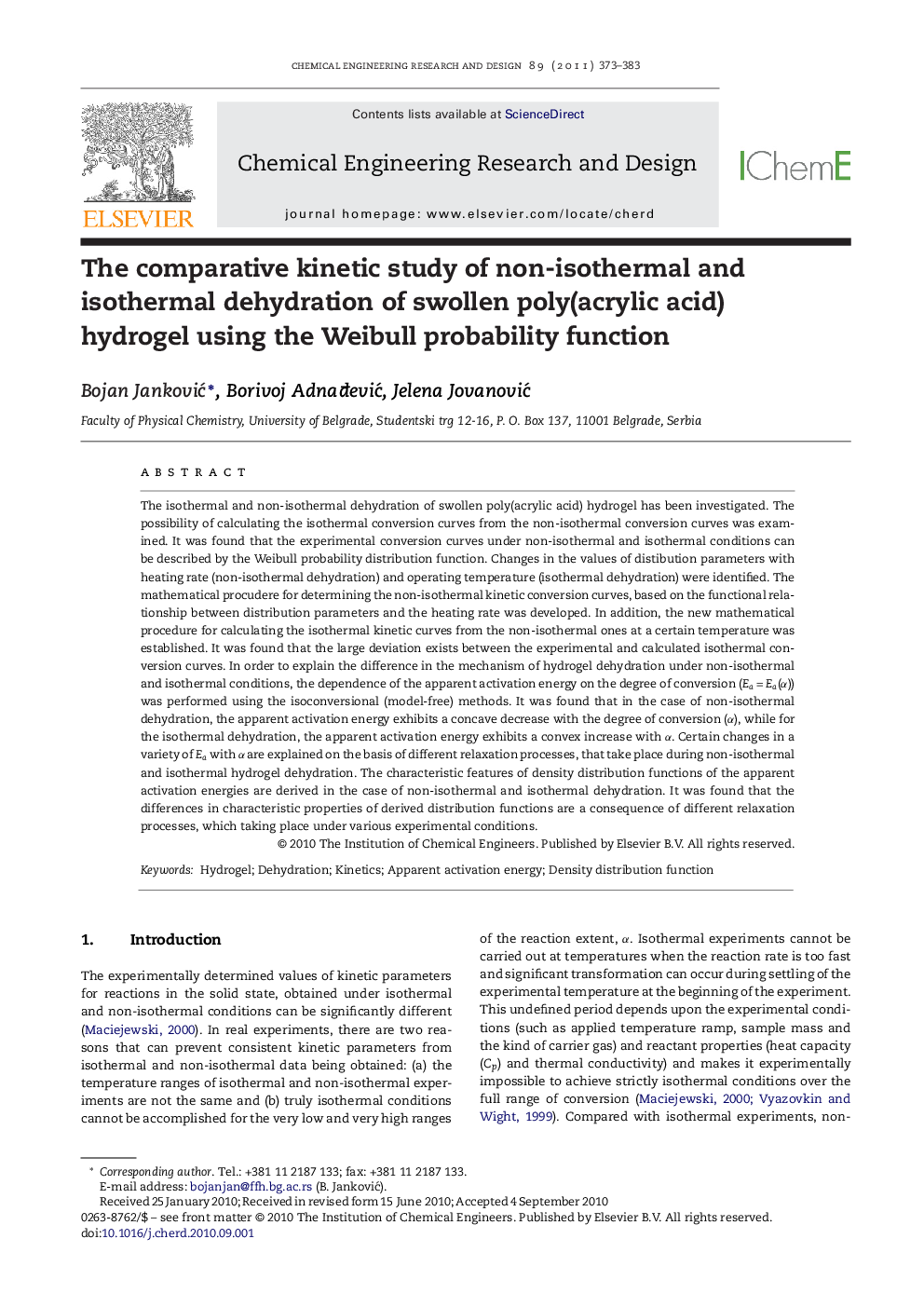| Article ID | Journal | Published Year | Pages | File Type |
|---|---|---|---|---|
| 621406 | Chemical Engineering Research and Design | 2011 | 11 Pages |
The isothermal and non-isothermal dehydration of swollen poly(acrylic acid) hydrogel has been investigated. The possibility of calculating the isothermal conversion curves from the non-isothermal conversion curves was examined. It was found that the experimental conversion curves under non-isothermal and isothermal conditions can be described by the Weibull probability distribution function. Changes in the values of distibution parameters with heating rate (non-isothermal dehydration) and operating temperature (isothermal dehydration) were identified. The mathematical procudere for determining the non-isothermal kinetic conversion curves, based on the functional relationship between distribution parameters and the heating rate was developed. In addition, the new mathematical procedure for calculating the isothermal kinetic curves from the non-isothermal ones at a certain temperature was established. It was found that the large deviation exists between the experimental and calculated isothermal conversion curves. In order to explain the difference in the mechanism of hydrogel dehydration under non-isothermal and isothermal conditions, the dependence of the apparent activation energy on the degree of conversion (Ea = Ea(α)) was performed using the isoconversional (model-free) methods. It was found that in the case of non-isothermal dehydration, the apparent activation energy exhibits a concave decrease with the degree of conversion (α), while for the isothermal dehydration, the apparent activation energy exhibits a convex increase with α. Certain changes in a variety of Ea with α are explained on the basis of different relaxation processes, that take place during non-isothermal and isothermal hydrogel dehydration. The characteristic features of density distribution functions of the apparent activation energies are derived in the case of non-isothermal and isothermal dehydration. It was found that the differences in characteristic properties of derived distribution functions are a consequence of different relaxation processes, which taking place under various experimental conditions.
Research highlights▶ Multi-step hydrogel dehydration mechanism. ▶ Weibull probability function. ▶ Parameters alternation with heating rate. ▶ New conversion curves prediction method. ▶ Different Ea density distribution functions.
